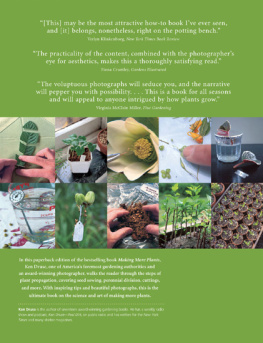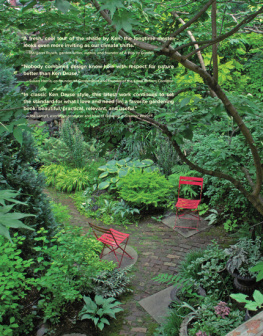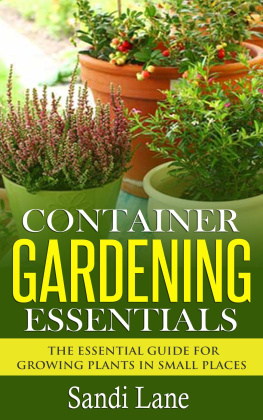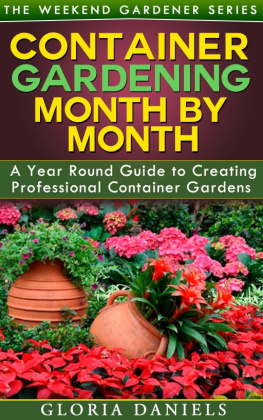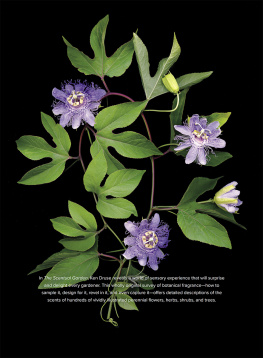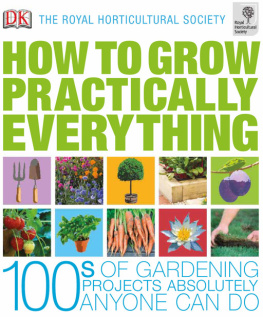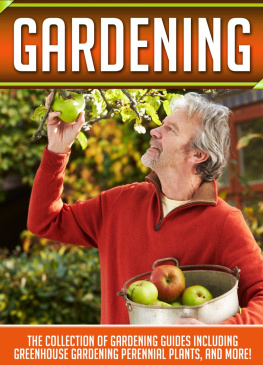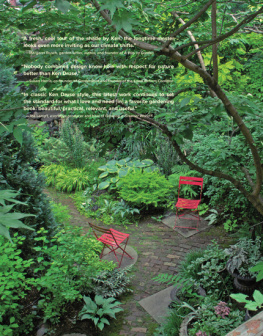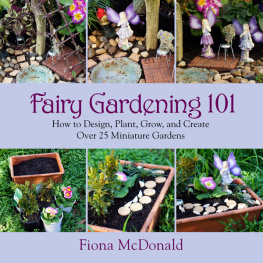



Original hardcover edition published in 2000 by Clarkson Potter/Publishers. This edition published in 2012 by Stewart, Tabori & Chang, an imprint of ABRAMS.
Text copyright 2012 Ken Druse
Photographs copyright 2012 Ken Druse
All rights reserved. No portion of this book may be reproduced, stored in a retrieval system, or transmitted in any form or by any means, mechanical, electronic, photocopying, recording, or otherwise, without written permission from the publisher.
The Library of Congress has cataloged the hardcover edition as follows:
Druse, Ken.
Making more plants: the science, art, and joy of propagation / by Ken Druse.1st ed.
1. Natural landscaping. 2. Plant propagation. I. Title.
SB439.D658 2000 635.9153dc21 00-026277 ISBN 0-517-70787-X
Paperback ISBN 978-1-58479-960-3
Designed by Alexander Isley Inc.
Stewart, Tabori & Chang books are available at special discounts when purchased in quantity for premiums and promotions as well as fundraising or educational use. Special editions can also be created to specification. For details, contact specialsales@abramsbooks.com or the address below.

115 West 18th Street
New York, NY 10011
www.abramsbooks.com

HELPING HANDS
For Ken Druse Studio:
George Waffle, Business Manager; Ann Kearney-Dutton,
Photo Editor; John Beirne, Plant ID; Louis Bauer,
Horticultural Consultant; Jill Hagler, Webmaster.
Helen Pratt, Literary Agent.
At Clarkson Potter/Publishers:
Chip Gibson, President and Publisher; Lauren Shakely,
Editorial Director; Olivia Silver, Editorial Assistant;
Marysarah Quinn, Art Director; Jane Treuhaft, Associate
Art Director; Amy Boorstein, Managing Editor; Mark
McCauslin, Associate Managing Editor; Nancy J. Stabile,
Copy Editor; Teresa Nicholas, Director of Production; Joan
Denman, Senior Production Manager; Tina Constable,
Senior Publicist; Merri Ann Morrell, Compositor.
Special thanks to House Beautiful magazine:
Oliver Louis Gropp, Editor in Chief; Peggy Kennedy, Editor;
and Betsy Hunter, Senior Editor.
The author also wishes to thank: Suzy Bales; Edmund Cyvas;
Norman C. Deno; Marcia Donahue; Helen Druse; Bill Fidelo; Bobbi
Fischer; Kelly Grummons; Eric Hammond; Dan Hinkley;
Vicki Johnson; Tom Koster; Jody Lathwell; Jean Lundberg; Seamus
Malarkey; John Mapel; Craig Masching; Bill Mills; Robin Parer; Bob and
Brigitta Stewart; John Trexler; Rosemary Verey; Nigel and Lisa Wright;
Robert Zeleniak; Wave Hill and the staff and gardeners headed by
Marco Stufano; The Garden Club of America.
CONTENTS

TO LB

Note:Many of the procedures described in this book involve sharp instruments. Please follow all instructions carefully and take all necessary precautions when using these instruments. Also, wear gloves when handling plant parts that are not well known to you and always wash hands thoroughly before eating or drinking. Contact with some plants may cause irritation, and many have toxic components, if consumed. Some plants may cause allergic reactions in some people.
Note on the photography:The majority of the photographs in this book were taken with a Mamiya 6/4.5 camera. Fujichrome Velvia (RVS) was the film stock used for most of the pictures. Additional film stocks included Kodak Ektachrome EPP, VSW and Fujichrome RAS. Several of the photographs are double exposures. None of the pictures were manipulated by computer or digitally altered after processing. Most of the hands in the book are the authors taken with a nonmechanical cable shutter-release.
A tall, sunset-colored grown from seed harvested by Dan Hinkley on a plant in the garden of Heronswood Nursery that originated as a tuber raised by Bleddyn and Sue Wynn-Jones of Wales by means of seed collected on a 1993 trip to Taiwan. And so, propagation perpetuates the lives of plants.

I was born in the spring, and I never got over it. I am obsessed by seasonal changes; am far too susceptible to the blahs as daylight hours shorten in autumn, get a little too high for my own good when the evening light lingers. I love plantsthe way they look and smell, leaves crisp in fall and flower buds bursting into bloom in spring.
Passersby may call any landscape a garden, but a well-trimmed lawn and tidy flower bed are not evidence of a guiding hand. The soul of a garden is an expression of its guardian, the person who orchestrates arrangements of plants; plans as they grow, thrive, or die; and constantly refines the picture. If you never moan about how much time it takes to garden but wish you had more time to spend in the garden, you probably are this person. If youve come to a point in your gardening life when your dreams outpace your means, if you would just as happily grow dozens of the plants you need as purchase a few from the garden center, and hope to grow your own foods, you are ready to make more plants.
Long ago, I learned the necessity to know each plant as an individual in order to help it grow; and when I needed many plants, I had to discover more about them. I had to become aware of the way plants work, and their place in the world. Then, I thought, I could practice the magic of propagation.
In 1996, I started a new garden beyond the confines of the narrow yard behind my Brooklyn town-house. I had been searching for a place in the country, where I could garden by the acre. Months of hunting in the area passed, and on a cold rainy day in December, I took what was to be my last exploration into the countryside. Friends Louis Bauer and Petie Buck came along, and after hours of driving and walking, we were hungry and tired and our clothes were damp. My companions moaned when I said there was just one more place to see.
As we drove down a steep hill and around a sharp turn in the road, Petie sat up and said, This is it. We were coming to a one-lane bridge over white water to the site of the new garden: 2.6 acres with a house on an island in a river.
I dreamed. I shopped for plants. I negotiated. And five months later, the first moving truck arrived, completely filled with plants. These first arrivals were barely enough to start the new garden, for as I planned and plotted my designs, I realized I needed many, many more. Because of cost and rarity, and just for the reason that some plants beg to be propagated, I began producing my own. And, like every gardener discovers, making more plants is one of the most rewarding, exhilarating, and addictive aspects of our passion.
Next page
